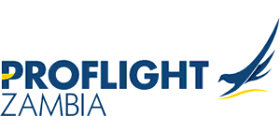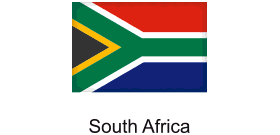Victoria Falls Border Post Goes 24/7: Unlocking Unprecedented Regional Travel & Trade

The Victoria Falls Border Post, strategically located between Zimbabwe and Zambia, has officially commenced 24-hour operations, marking a pivotal shift in cross-border travel and commerce across Southern Africa. This transformative policy, detailed in an Extraordinary Government Gazette on November 13, aims to foster seamless mobility, stimulate tourism, and significantly bolster trade within one of Africa’s most iconic regions. Confirmed by Ambassador Raphael Faranisi, Secretary for Home Affairs and Cultural Heritage, under General Notice 2265A of 2025, the indefinite extension of border crossing hours leverages Section 41 of the Immigration Act, granting travelers, traders, and local communities unparalleled access to the border at any time, effective immediately.
For the vibrant tourism sector, this round-the-clock border opening represents a monumental change. Victoria Falls, revered globally and known locally as Mosi-oa-Tunya (“The Smoke That Thunders”), attracts countless visitors eager to experience its breathtaking beauty from both the Zimbabwean and Zambian sides. Previously, rigid operating hours often dictated traveler itineraries, sometimes causing missed excursions or lengthy waits. Now, tourists benefit from enhanced flexibility, allowing them to plan visits at sunrise or sunset, engage in night-time activities, and maximize their stay on either side of the Falls. This increased accessibility is projected to boost tourist arrivals, prolong average stays, and encourage deeper exploration of the surrounding areas. Local tour operators, hotels, and experience providers are set to gain considerably, as travelers are no longer constrained by border curfews, enabling seamless connections to regional attractions such as game reserves, adventure sports, and cultural sites. The initiative firmly supports the vision of establishing Victoria Falls as a truly integrated tourism destination, serving as a crucial gateway for multi-country itineraries across Southern Africa’s World Heritage corridors.
Beyond tourism, the extended border operating hours herald a substantial win for cross-border trade. Previously, transporters and traders frequently encountered overnight delays, leading to considerable costs while awaiting border reopening. This new policy effectively removes such bottlenecks, ensuring a continuous flow of goods, trucks, and commercial traffic. Consequently, transit times are expected to shorten, transportation expenses will likely decrease, and supply chain reliability will improve—all critical factors for exporters, importers, and logistics providers operating within the SADC region. The positive ripple effects will also extend to small-scale traders and informal cross-border entrepreneurs. Easier and more predictable border access is anticipated to stimulate business expansion, foster new partnerships, and unlock growth opportunities in both local and regional markets. This enhanced efficiency is poised to boost competitiveness, potentially attracting further investment and innovation along this vital trade corridor.
For the local communities residing in and around Victoria Falls, 24/7 border access brings significant convenience to daily life. Commuters, students, and families who regularly traverse between Zimbabwe and Zambia can now do so without the limitations of fixed opening and closing times. This enhanced freedom of movement strengthens social and economic ties, further integrating the border communities and supporting shared development objectives. Another key advantage of continuous operations is the anticipated reduction in border congestion. Historically, the 10 PM border closure often led to surges of traffic just before the morning reopening, resulting in prolonged queues and extended waiting periods for both travelers and commercial vehicles. By dispersing movements across a 24-hour window, authorities expect smoother processing, shorter lines, and a more pleasant experience for all border users.
This new era at the Victoria Falls Border Post aligns with broader trends across the African continent, where governments and regional blocs are increasingly prioritizing infrastructure upgrades and improved regulatory frameworks to enhance the mobility of people and goods. The decision positions Zimbabwe and Zambia as progressive leaders in the regional integration agenda, strategically leveraging one of Africa’s most visited landmarks to anchor sustainable growth and prosperity. For industry professionals, the implications are extensive. Regional airlines, bus operators, and transfer companies now possess the flexibility to devise schedules that optimize traveler convenience and capitalize on new demand patterns. Accommodation providers and destination managers can now market Victoria Falls as a genuinely accessible, year-round attraction. Simultaneously, local businesses and artisans will benefit from the increased foot traffic and spending that a more fluid border inevitably brings.
As sub-Saharan Africa’s travel and trade landscape evolves, the 24-hour opening of the Victoria Falls Border Post stands as a powerful testament to policy reform’s ability to unlock economic potential. This initiative underscores the critical need for ongoing collaboration among immigration authorities, customs, tourism boards, and private sector partners to ensure that operational efficiencies are complemented by robust security measures, excellent customer service, and effective destination marketing efforts. Looking ahead, the successful implementation of continuous border access at this flagship crossing could serve as a blueprint for other key gateways across Africa, encouraging further investment, fostering regional integration, and enhancing the continent’s appeal as a premier destination for both leisure and business travelers. Victoria Falls, already a global symbol of African wonder, now leads the way in border management innovation, offering a level of access and opportunity that resonates deeply with the ambitions of the region’s tourism and trade stakeholders. This strategic move is expected not only to increase arrivals and commercial flows but also to inspire a new spirit of connectivity, collaboration, and growth for years to come.
Recommended Articles
Victoria Falls Border Goes 24/7: Zimbabwe Unlocks Tourism Boom!

The Victoria Falls Border Post now operates 24 hours a day, a significant policy change announced via a Government Gazet...
Adventure Beckons! Proflight Zambia Launches Scenic Route to Africa's Wonders

Proflight Zambia is set to launch a new seasonal route in May 2026, connecting Lusaka and Livingstone with Maun, Botswan...
Zambia's Diplomatic Battle: Washington vs. Beijing in a Geopolitical Showdown

Zambia is experiencing a geopolitically significant period, positioned at the center of a quiet contest for influence be...
Zambia's Political Storm: PF Riven by Cadre Chaos & Internal Convention Showdowns

Zambia's opposition Patriotic Front (PF) is engulfed in deep internal turmoil, with civil rights activists and other pol...
Zambia Rocked: President Hichilema's Convoy Stoned, 27 Arrested in Violent Chingola Clashes

A presidential visit to Chingola erupted into chaos, prompting Vice President Mutale-Nalumango to issue a strong warning...
You may also like...
Super Eagles' World Cup Dream Shattered: Nigeria vs DR Congo Fallout
)
Nigeria has been eliminated from the 2026 FIFA World Cup qualifiers after a penalty shootout loss to DR Congo. The drama...
Warner Bros. Discovery Acquisition Battle: Rivals, Rumors, and High-Stakes Bids

Warner Bros. Discovery is on the block with a November 20 bid deadline, attracting offers from Paramount Skydance, Netfl...
Emerging Talent: Thuto's Debut Rocks Botswana Music Scene

Debut artiste Thuto Rantao, daughter of jazz musician Kearoma Rantao, has launched her career with the EP "Baloi." The E...
South Africa's WTM London 2025 Double Triumph: Igniting a New Era for African Tourism

South Africa’s tourism sector garnered significant optimism and international recognition at World Travel Market London ...
Victoria Falls Border Post Goes 24/7: Unlocking Unprecedented Regional Travel & Trade

The Victoria Falls Border Post between Zimbabwe and Zambia has officially transitioned to 24-hour operations, promising ...
Unlock Youth & Halt Hair Loss: Top Scientist Exposes Vitamin D Secrets and Supplement Scams!

Vitamin D supplements are a growing market, with increasing research highlighting their health benefits for immunity, bo...
Urgent Alert: Health Chiefs Warn of Cold Weather Dangers as Temperatures Plummet!

A severe cold snap is gripping Britain, prompting amber health alerts and raising concerns about widespread health issue...
Google Unleashes Next-Gen Gemini: Revolutionizing Search with New Coding App and Record Benchmarks
Google has launched its latest AI model, Gemini 3, integrating it into search and other services to compete in the rapid...